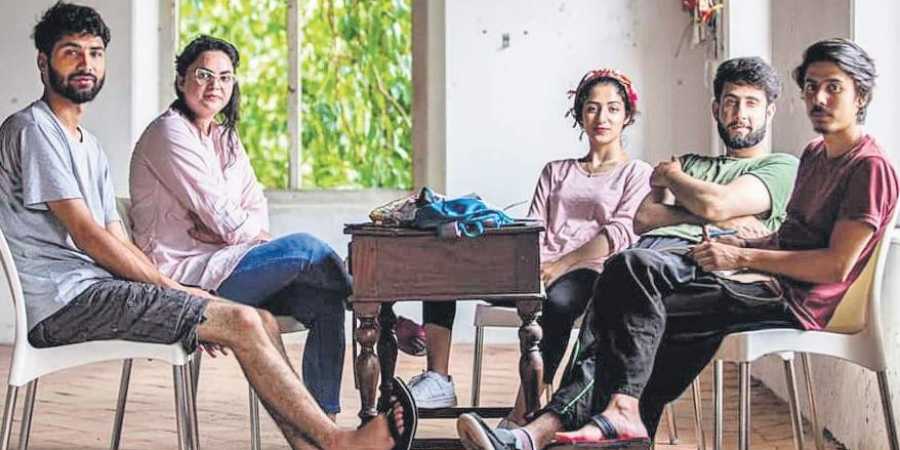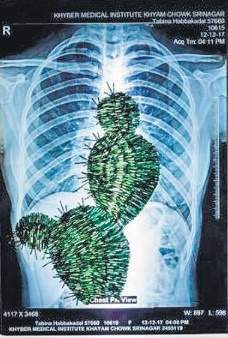JAMMU & KASHMIR :
Five students, who won the TATA Trusts Students’ Biennale National award, now serve a month-long residency in the city and showcase a Kashmir that is so different from the stereotype.

Kochi :
What is home? For many of us, it is solid and concrete, but to belong to a place of unrelenting turmoil is to hold the idea only in memory. The struggle is to capture an image that is in constant flux. For the students of the Institute of Music and Fine Art, University of Kashmir, who were granted the TATA Trusts Students’ Biennale National award at the closing ceremony of the Kochi-Muziris Biennale, art is rooted in conflict and trauma they have witnessed all their life.

Students Biennale 2018
Kochi Biennale Foundation
Anis Rasheed, Arona Riyaz, Muzamil Ahmad, Numair Qadri and Tabeena Nissar Wani are the first batch of 11 recipients of the award who are in Kochi for a month-long residency programme at Pepper House.
Taking off from his video installation for the Students Biennale, Anis is exploring the polar opposite perceptions of his homeland. Kashmir, as the site of breathtaking beauty, is undercut by the news of regular ferment.
The work is called Jannat-e-Benazeer (unparalleled paradise). The audience upon seeing the setting of a movie theatre (absent in Kashmir) struggles to reconcile the heaven of popular imagination with the starkly different ground reality.
Muzamil, whose work was also exhibited at the Students Biennale communicated the idea of a vanishing house by showing ashes from his ancestral home which was burned down in 1990. For the residency, he is authoring a narrative of loss by depicting 200 graves, in memory of the people who were killed during the insurgency.
Numair’s has used familiar objects like pellets, stones and bricks, which have been turned into tokens of violence and killed thousands of young Kashmiris. Their unidentified graves populate the state even as families try to find closure. The idea of building numerous nameless graves will accompany Muzamil’s art in forging a fierce metaphor.
Tabeena, who had used X-rays of her own body to embroider disquieting patterns considered the practice as a temporary refuge from chaos and confusion. She will now detail recollection as an intensely private experience by exhibiting motion-blurred pictures of people declared missing. The distortion will act as a trope for hazy memory as well as an indicator of falsification of news that is propagated to the rest of the country.
Arona draws a parallel between a deeply personal struggle to the collective travails of her people. Having been in a coma for over two months following an accident, Arona is seeking to reinvestigate self-healing in correlation with the political scenario of her state.
source: http://www.newindianexpress.com / The New Indian Express / Home> Cities> Kochi / by Swetha Kadiyala / Express News Service / July 17th, 2019








